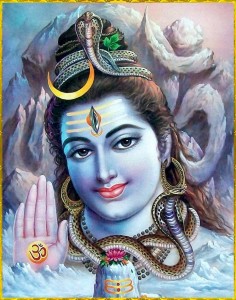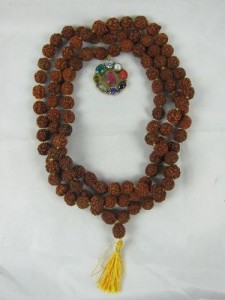
One night of each year in the Indian calendar is dedicated to worship of Lord Shiva. This sacred holiday is known as Maha Shivaratri – the great night of Shiva. Maha Shivaratri 2014 falls on Thursday, February 27 in the U.S. and in India.
In the Vedic tradition, there is a trinity of the major GODs: Brahma, Vishnu, and Shiva. Shiva’s worshipers know him to be compassionate and merciful. He protects his disciples from vices and bestows them with his grace. Shiva removes that which has outlived its usefulness and then allows us to start anew. He can remove our limitations, negativities and false beliefs. He brings about radical transformation.
He has a crescent Moon on his head. It represents the cycles of time. Shiva has a snake around his neck. The snake is a symbol of the kundalini shakti, or spiritual power inside all of us.
Shiva has many names. Each name is meant to describe various attributes of him. Some names are: Nataraj, Mahadeva, Mahesh, Rudra, Ugra, Ardra, Maheshwara, Shambho, Shankara, and the list goes on. Each name describes a specific quality of the lord’s multi-faceted being. Shiva is “Mahadeva” – the great lord. Shiva means “that which underlies.”
On this auspicious and sacred night, it is said that one repetition of the mantra “Om Namah Shivaya” is magnified 1,000 times. Due to the great merit of this mantra repetition (or japa), it is customary people to gather and stay up all night chanting the sacred mantra. People typically fast on this day or refrain from eating grains. Steamed milk with aromatic spices if prepared and served or left outside in the moonlight. White clothing is traditionally worn on Shivaratri.

The rudraksha mala is traditionally associated with Lord Shiva. It is said that Shiva cried tears when he saw the suffering of humanity and these tears fell to the ground and formed seeds which grew into the rudraksha tree. Rudra is another name for the fierce form of Shiva. Aksha translates as “eyes”. When doing mantra japa to Shiva, it is beneficial to use a rudraksha mala if possible.
While chanting is common in groups and at ashrams, spiritual retreat sites, etc., the focus in entirely inward. As we chant “Om Namah Shivaya” (I honor Shiva – the supreme being who resides in each of us), we can connect once again to our own innate divinity and acknowledge that there are multiple facets to our own great being. We can also recognize the divinity that exists in each of us and honor that time and again.
The celebration of Maha Shivaratri is done on the 14th night of the waning Moon in the Indian lunar calendar in the month of Maagha. Typically, in Vedic astrology, the phase of the Moon is calculated at sunrise in a location. However, for this lunar holiday, astrologers look at where the Moon is at midnight. The phase or tithi of the Moon on Shivaratri is known as chaturdashi tithi in Vedic astrology.
For Shivaratri 2014, this phase of the Moon begins at 6:55 AM on Thursday, February 27 and continues until approximately 3:20 AM Pacific time on Friday, February 28 in the U.S. Information on Maha Shivaratri can be found on the Mypanchang website.